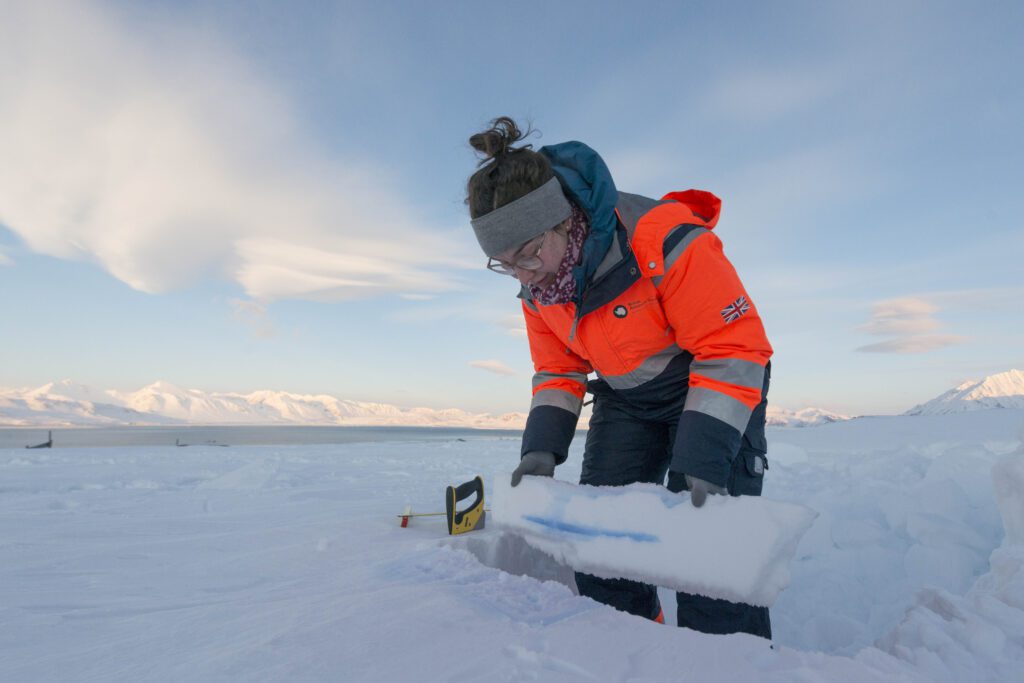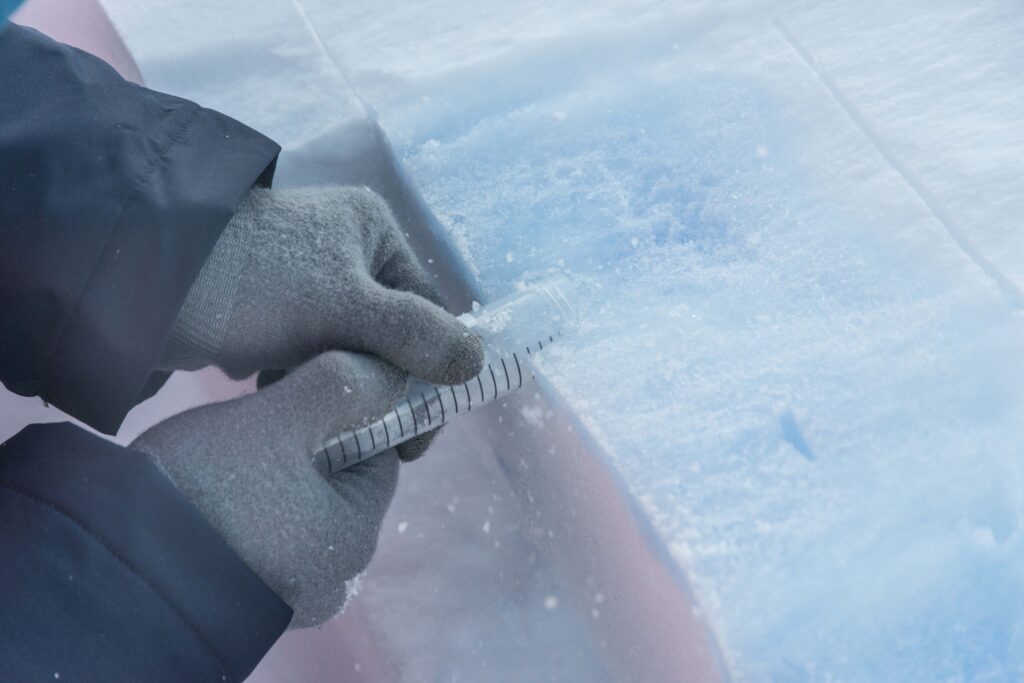Photo: Elias S. Aukan/NPI
European collaboration provides new insights into the warming and melting Svalbard snowpack
Written by Dorothea Moser, PhD Student, British Antarctic Survey
Adapted by Ingrid Kjerstad, The Norwegian Polar Institute
As rain-on-snow induced melt events are becoming more frequent in Svalbard, PhD researcher Dorothea Moser, who is based at BAS and the University of Cambridge, collaborates with NPI and CNR-ISP colleagues to analyse the changes of snow structures and chemical signatures through flowing and refreezing meltwater.
The time to study melt effects in snow is now
Polar ice-core researchers have extracted numerous ice cores from Svalbard glaciers that have provided invaluable information about changes in climate. However, the preservation of climate signals in local ice cores is deteriorating in the rapidly warming Arctic, and scientists face the challenge of interpreting records in which melt has washed out parts of the environmental history.
During an Arctic Field Grant-funded field campaign before the start of the melting season in March 2023, which was supported by the NERC Arctic Research Station, the team conducted twenty rain-on-snow experiments in the vicinity of Ny-Ålesund. The insights that they have gained from them are fundamental for interpreting climate signals in melt-affected ice cores from Svalbard glaciers and beyond.
Melt tracer experiments highlight the interplay of melt and snowpack
Despite the fact that extreme cold provided the team with a few challenges, a unique set of data has been obtained, which provides new insights into how melt alters the snowpack. Preliminary analyses of the in-situ percolation experiments already show the importance of snow layering and temperature on meltwater flow. The team has also documented a diversity of melt structures, which help to interpret refrozen features visible in ice cores. Furthermore, the alteration of stable water isotope signatures appears to be gradual and locally confined to the melt-freeze features – encouraging results, given how important their records of d18O and d2H are for climate reconstruction.

The experiment design: before vs. after
The first step of each experiment was to establish baseline conditions of the snowpack in terms of temperature, layer structure and chemistry. Subsequently, to simulate a rain-on-snow event, the team used a blue-coloured water tracer of known temperature, volume, and isotopic signature (d2H) and applied it over a defined snow pit area. Temperature changes of near-surface snow associated with melting were monitored with several thermometers until snow temperatures started to drop again and refreezing became evident. Afterwards, the structural melt imprint was described, and samples were taken in selected places for stable water isotope analysis.


A small community of vibrant collaboration
The team and samples are now back at their home institutions, but the unique research conditions in Ny-Ålesund, where scientists from around the world live and work together for scientific advances in times of rapid environmental change, remain an invaluable source of synergies for this and other projects. Presenting the preliminary results at the Svalbard Science Conference 2023 has been a crucial step to connect with and build new networks for further collaboration, and there is more to come: a scientific publication and wider research dissemination. So, stay tuned.
Read more about glaciology in Ny-Ålesund:
Additional information
Need funding for field work on Svalbard? Check out the annual Arctic Field Grant from the Norwegian Research Council!
You want to know more about how melting affects ice core records?! Read this article from Moser et al. (2023) !
To learn more about the deteriorating climate signals in Svalbard ice cores, check out the preprint by Spolaor et al. (2023) in The Cryosphere Discussions.
Did you find what you were looking for?